…and What Prospect Avenue Has to Say
House Tour | written by: MARIAN CASTELL, Darien Town Historian, with PAMELA DEY VOSSLER /
photos by: BAMBI RIEGEL | riegelpictureworks.com
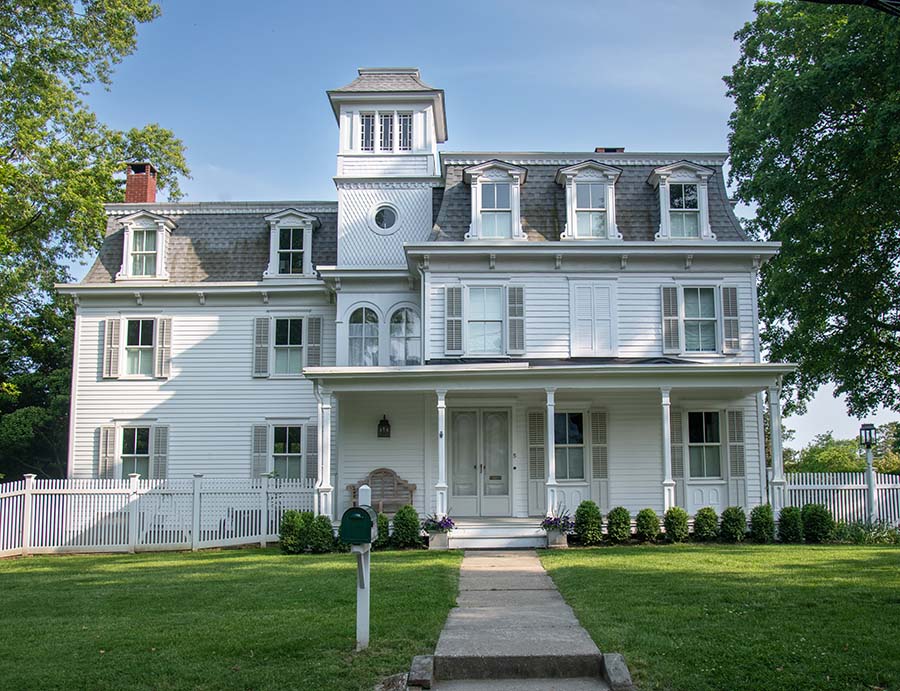
5 Prospect Ave. Second Empire / Built in 1867 by Charles G. Morehouse; the first house constructed on Prospect Ave.
Originally an Italianate design, 5 Prospect Ave. was remodeled in 1888 into a Second Empire house with a cupola, four-story tower and mansard roof. Second Empire designs were inspired by the rebuilding of Paris in the 1850s. Their distinctive mansard roofs were designed in France to provide extra living space on the top floor, while avoiding taxes which were calculated on the number of stories below the roof.
Houses speak to us. They tell us about who we were and how we came to live as we do today. They chart our evolution and what they say to us varies depending on when, why and how they were built. Perhaps among the loudest voices in this particular conversation in Darien is Prospect Avenue, Darien’s very first “subdivision,” thanks to one Melville Mead, a successful 19th century insurance broker turned visionary developer.
Though barely 32 years old when he started Prospect Avenue, his earliest and most enduring project in town, it remains, undeniably, one of the most striking streets in Darien and among the best examples of how past and present reside in an elegant esprit de corps.
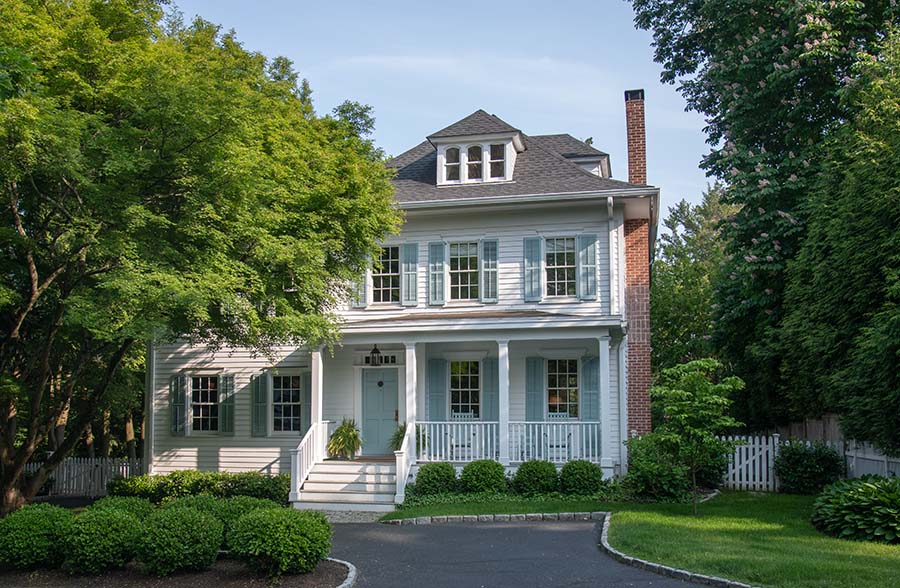
11 Prospect Ave. Vernacular/Late Victorian Eclectic / Built in 1867 by Horace Whitney.
Vernacular style houses often have an irregular massing of exterior details reflecting
a free-form interior plan. Faced with clapboard or shingles, the most common feature is a large gable facing the street. Windows are long and narrow, sometimes with stained glass.
Because architecture is also history, a visual reflection of people’s lives, problems, values, world events and technological developments. Early styles, such as what we see in Colonial era homes, relate to efficient ways of staying warm and farming. Later styles reflect the movement away from farming to trade and commerce with rooms to support new needs—rooms for formal entertainment, rooms for music, rooms for servants and rooms to impress, to express the grandeur of the time. Adding porches was exciting for them, a manifestation of the leisure time they now had. The 19th century and its new technologies (such as the coal burning furnace—the first central heating system), along with the expansion of the British Empire stimulated a new world outlook and new, multi-faceted and imaginative styles such as Italianate, Vernacular, Second Empire, Edwardian/Neo Classical and Queen Anne. This is what we see on Prospect Avenue. Gone were the easier-to-heat boxes with the few holes for windows they allowed. Sunlight, air, space—these were what people wanted, not only as a stage for the emerging wealth of the time and America’s rising industrial power worldwide, but as a hedge against tuberculosis, the scourge of the day.
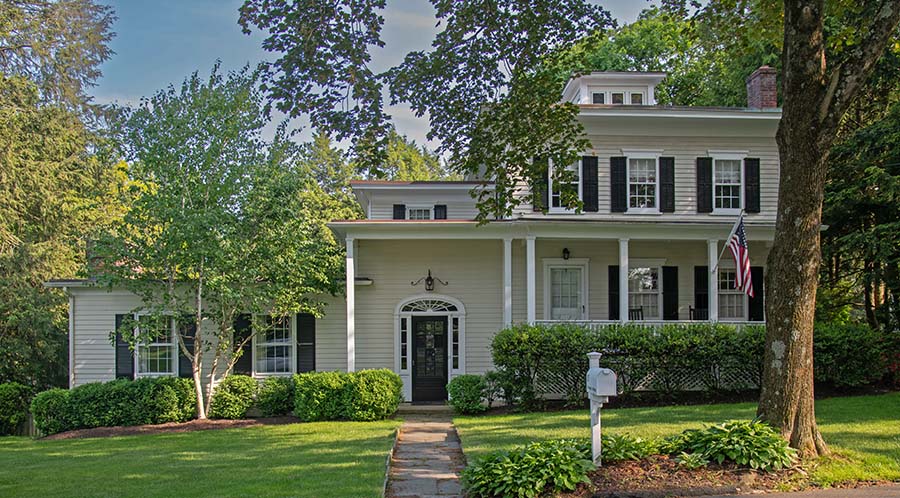
13 Prospect Ave. Italianate / Built in 1868 by Charles Stuart Whitney.
Inspired by Italian country villa architecture and two or three stories high, Italianate houses are most frequently boxy in shape with asymmetrical massing of wings, towers and bay windows while others are completely symmetrical, based on the Federal plan. First floor windows are tall and thin. The Italianate style revolutionized building by introducing a structural system called balloon framing which replaced the heavy posts and beams used earlier. It is still in use today.
New to town by way of Manhattan in 1864, Mead and his wife fell hard for Darien and Mead wanted to do well by their new home, starting with the eight-acre parcel of rolling hills, open fields and views of ships on Long Island Sound which would become Prospect Avenue. He bought the land from the Mather brothers for $3,500 in 1865. Mead named it Prospect Avenue for its vistas. (You’d be hard pressed to find even the roots of the trees that line the avenue today.) It was the year the Civil War ended and the railroad put New York within commuting reach. Trade was booming, and Mead saw what Darien was to be.
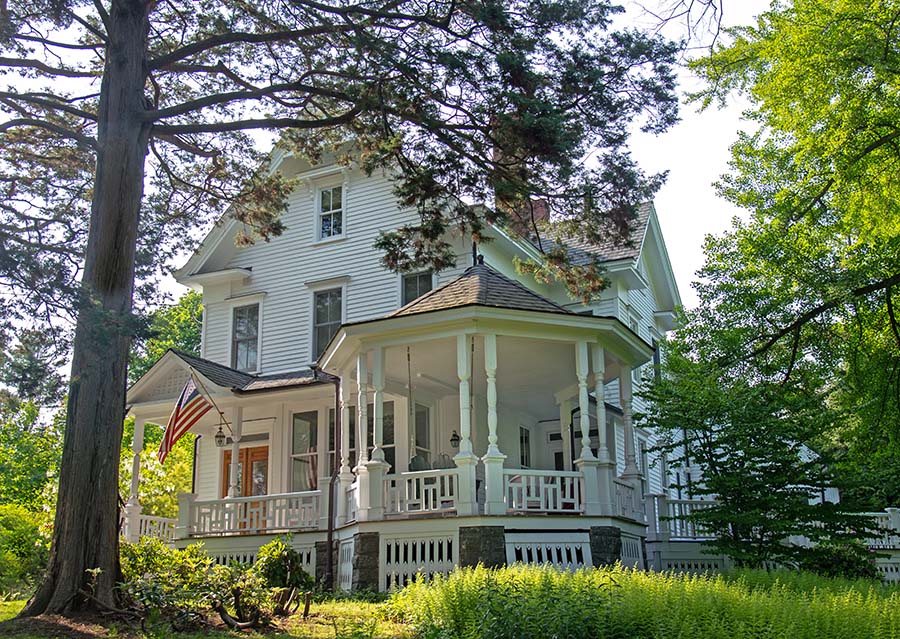
20 Prospect Ave. Queen Anne / Built in 1887 by Alfred Morehouse.
This style is large and asymmetrical with a variety of forms, textures and colors with towers, turrets, tall chimneys, gables and porches. In their 1981 slide lecture about Prospect Ave., Fran Landon and Nancy DiJoseph described 20 Prospect Ave. as “an impressive example of the Queen Anne style that prevailed in the late 19th century,” calling out the “verandah with Chinese-style fretwork combined with pierced brackets, turned posts and a decorative skirt.” They noted also the “the diversity of windows that illustrate the variety of treatments possible in this style.”
He cut a road from Mansfield Avenue three-quarters of the way to what is now Brookside Drive, divided the land into 24 building lots and put them up for sale. Absent zoning laws (which would not come to Darien until 1925), developers called the shots. Mead, intent on creating a beautiful neighborhood that would attract Darien’s “most respected citizens” stipulated that homes built had to be “substantial private residences” worth $1,000 and set back at least 20 feet from the avenue. Mead wanted the houses built within one year of purchase and refunded $250 of the purchase price upon completion of the house.
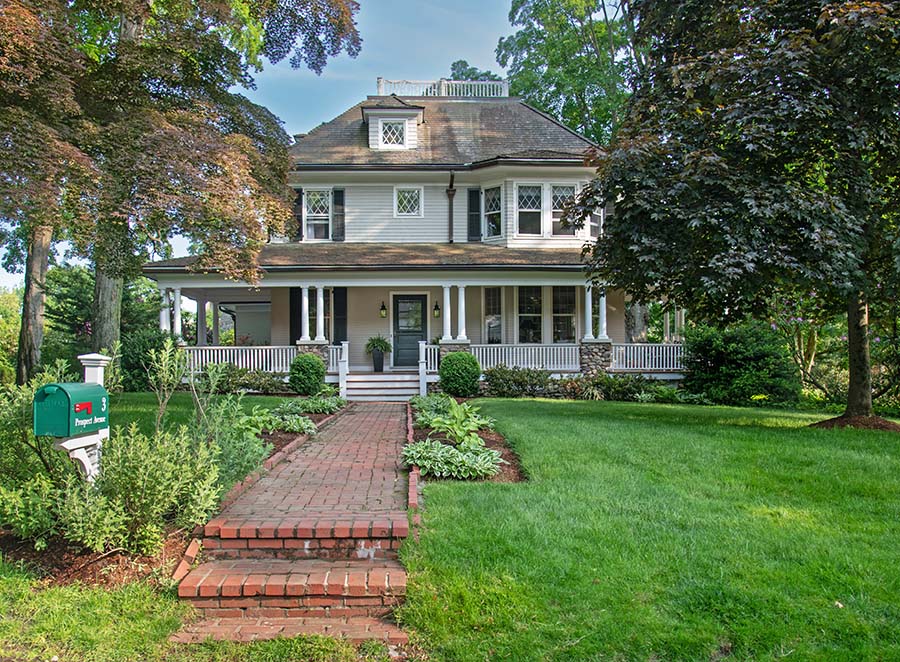
3 Prospect Ave. Edwardian Classicism/Neo-classical Revival / Built in 1900 by Clarence Bell; the last home built as part of Mead’s Prospect Ave. subdivision.
Characterized by a square or rectangular shape with a highly pitched, hipped roof with dormer windows. “Neo-classical Revival houses were built on a grander scale than the originals, with larger doorways, windows and overall house footprint. Diamond paned windows add warmth to an interior which has many inviting nooks and crannies,” according to Fran Landon and Nancy DiJoseph in their 1981 slide lecture.
Extraordinarily, much of what was built then remains today, a wealth of architectural character. Though updated and modernized, the bones remain, the conversation continues …thanks to generations of owners who’ve kept it going.
Editor’s Note: To learn more about the architecture and history of Prospect Avenue, check out Darien Observed. It’s an architectural history of Darien full of great images and detail. You’ll find it for sale at the Museum of Darien, 45 Old King’s Highway
